Heirloom apple varieties on the farm
About > Heirloom apple varieties on the farm
We are proud to grow a number of interesting heirloom varieties not typically found in stores or commercial orchards. Here is a gallery, with images and descriptions, of the varieties on our farm that we have positively identified.
Bohnapfel (Bobovec)
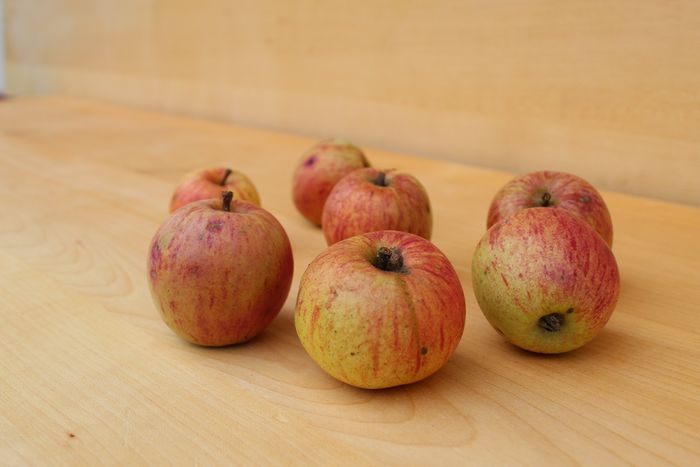
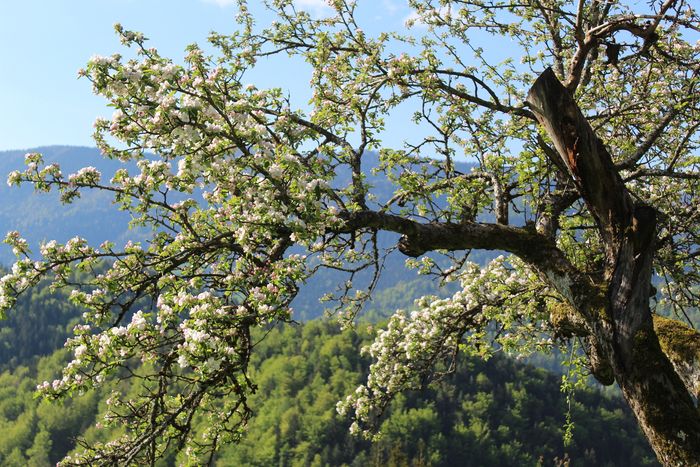
Bobovec is of uncertain origin, though horticultural experts believe it most likely comes from the Rhineland in Germany in the 18th century. In Slovenia, it has long been naturalized and is considered one of the most characteristic apple varieties in meadow orchards. It is a medium-sized apple, although the fruits vary somewhat in size. The base color is greenish-yellow, with about half the fruit covered in red patches. It ripens in the second half of October. The flesh is initially tart and sour, but as it mellows, it becomes juicy and pleasantly delicate in flavor. It is most often processed, but if properly stored, it can be enjoyed fresh up until June.
Belle de Boskoop (Boskopski kosmač)
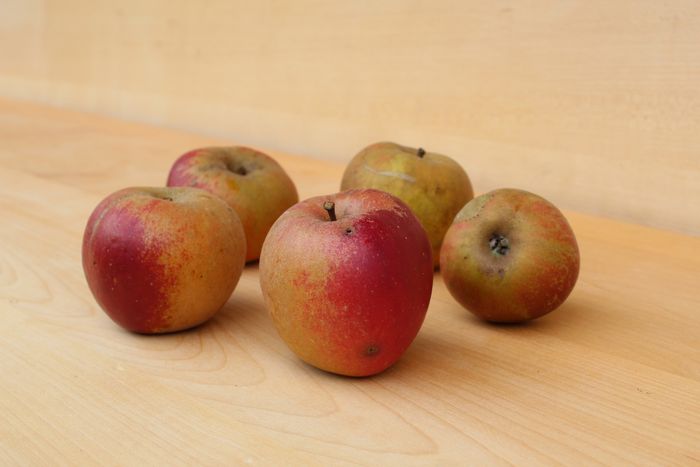
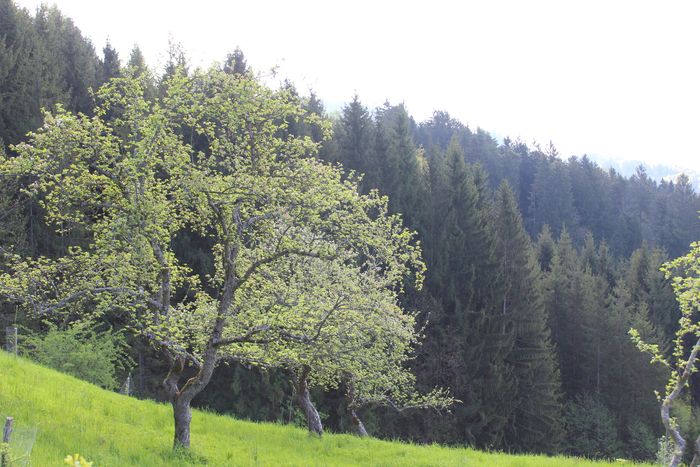
Belle de Boskoop (Boskopski kosmač) originates from the town of Boskoop in the Netherlands, where it was discovered in 1856. The fruits are medium to large, round, and slightly flattened, with a rough skin. As they ripen, the base greenish color turns to an orange-brown, while the side exposed to the sun becomes reddish. It ripens at the end of September. The flesh is firm, juicy, sweet, and aromatic. It is excellent when eaten fresh and is also highly valued for processing.
Carjevič
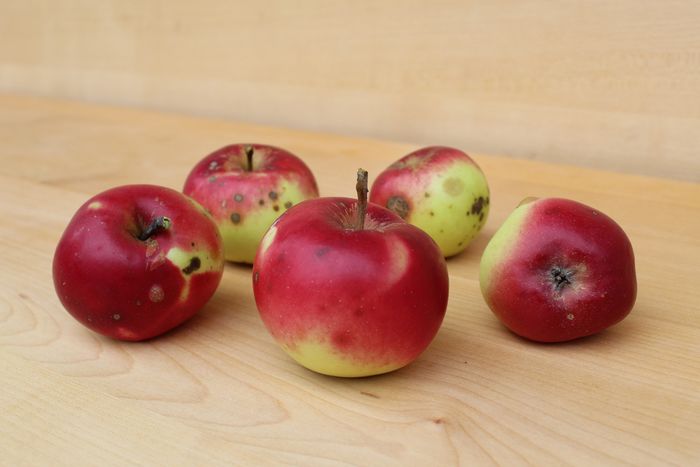
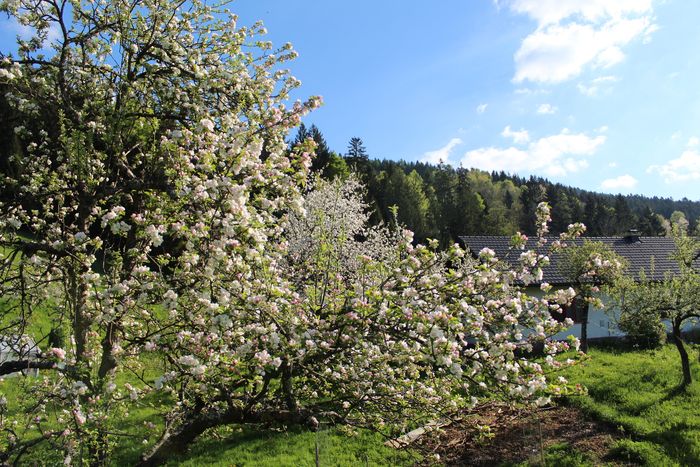
Carjevič is an old indigenous variety from Slovenian Styria, thriving in cold climates and at higher elevations. It is a smaller apple, with fruits that are round and slightly flattened, sometimes narrowing a bit toward the calyx. The skin is smooth. The base color is yellow-green, with the side exposed to the sun developing a characteristic red blush. It ripens at the end of September and the beginning of October. The flesh is white, very juicy, and sweet-tart in flavor. It is best enjoyed fresh, but when properly stored, it can keep until the beginning of spring.
Gravenstein (Grafenštajnc)
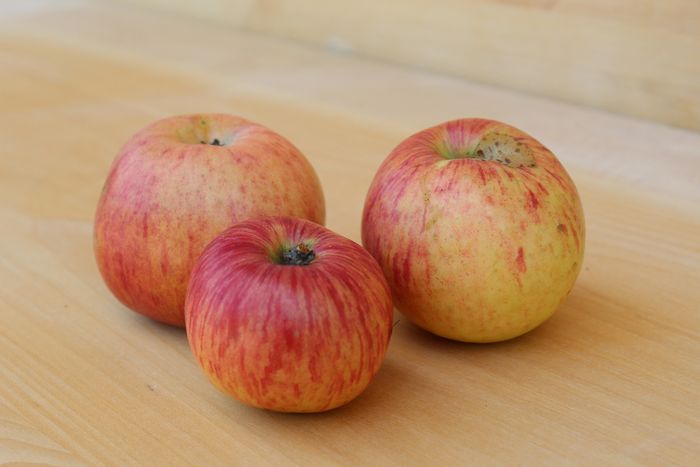
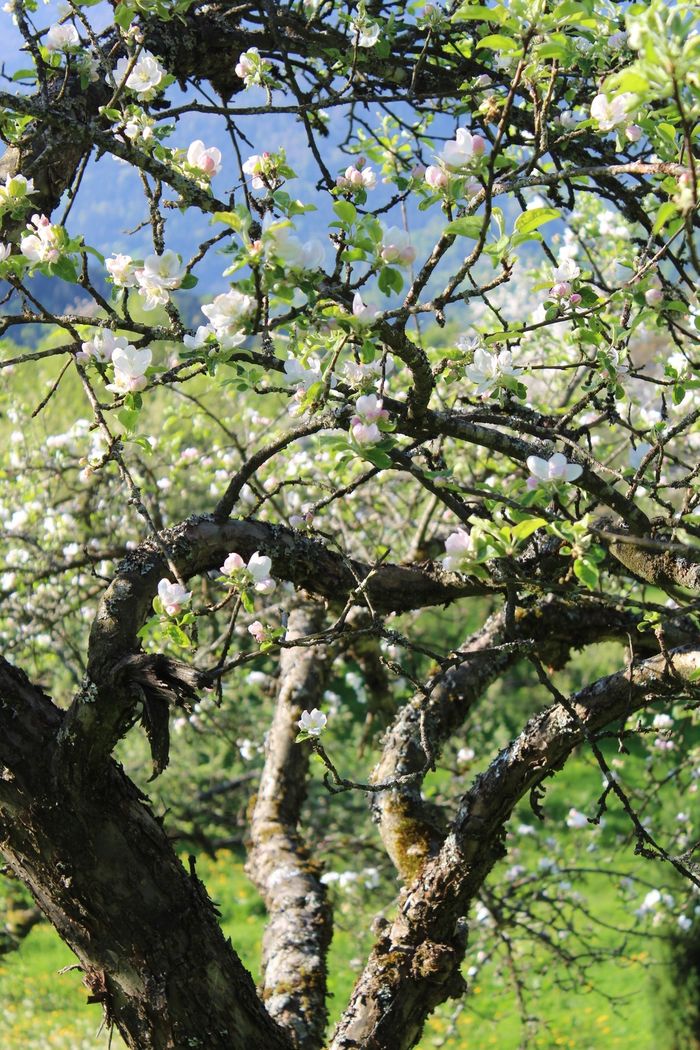
Gravenstein (Grafenštajnc) originates from Denmark and was named after Gråsten Castle, where the variety was cultivated as early as the 17th century. The fruits are large, irregularly shaped, and somewhat flattened. The ripe apple has a greenish-yellow base color with crimson red streaks. The flesh is very juicy, pleasant, and aromatic. It is an early apple, ripening at the beginning of September. The variety is highly valued for fresh consumption but is not suitable for storage, so it is not found in commercial orchards.
Jonathan (Jonatan)
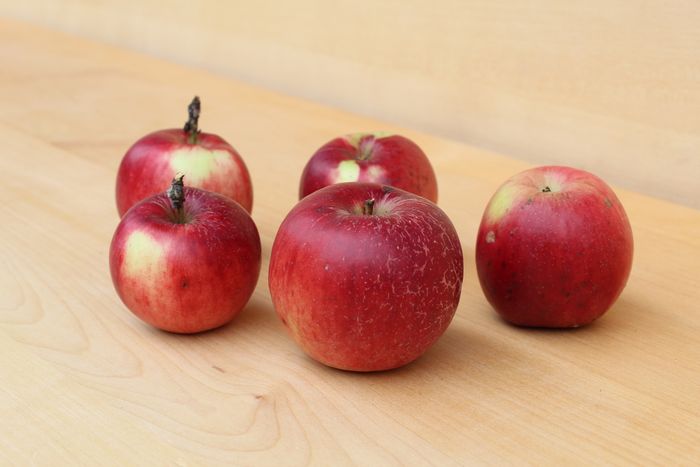
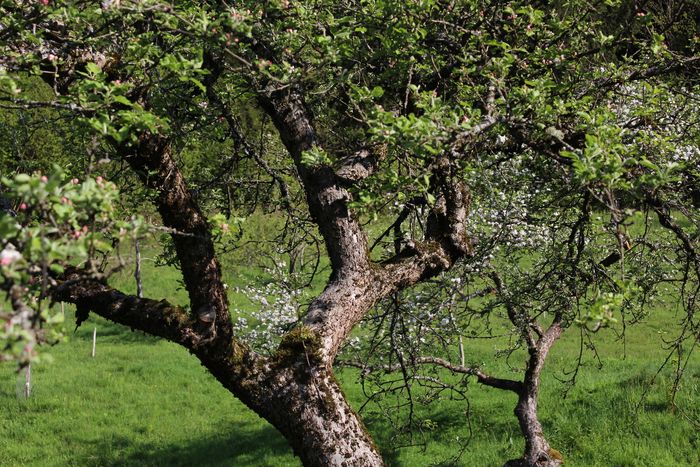
Jonathan (Jonatan) originates from the United States, where it was developed in New York at the beginning of the 19th century. In Slovenia, it has long been a popular apple variety and commonly features in traditional meadow orchards. The fruits are medium-sized, fairly uniformly round in shape, and mostly covered with a bright red color. The flesh is juicy, whitish, firm, aromatic, and pleasantly sweet-tart in flavor. It is best enjoyed fresh, but it can also be processed into juice or dried. It ripens from mid- to late September, and can last until sprint when properly stored.
Reinette du Canada (Kanadka)
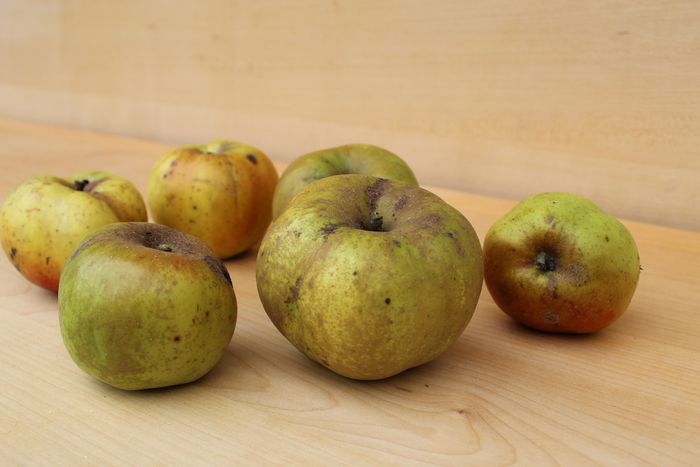
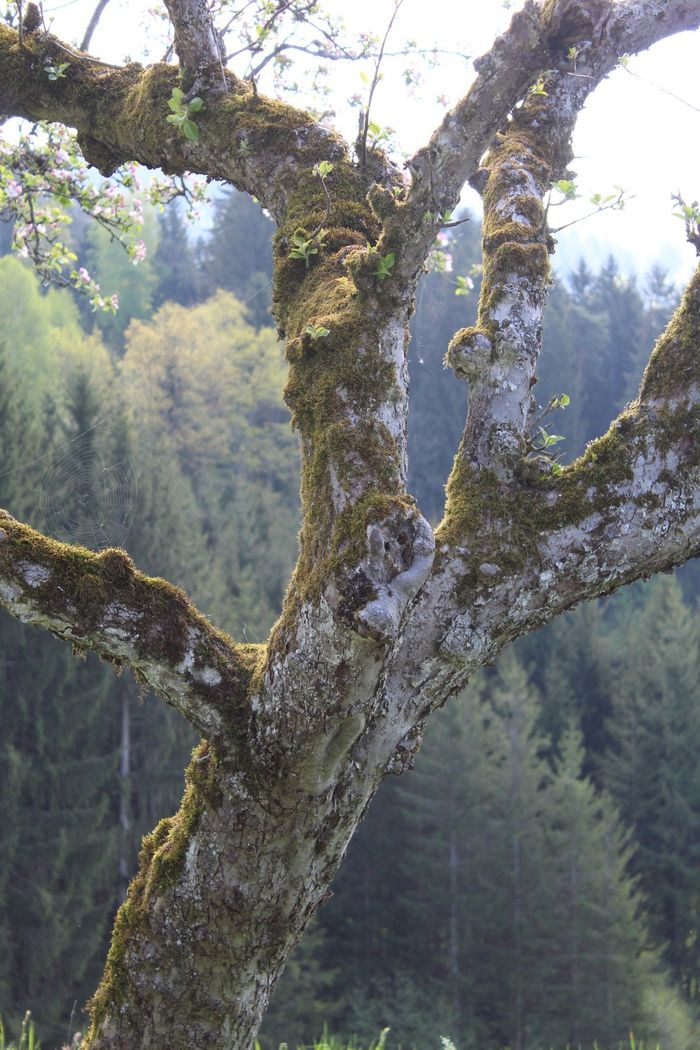
Reinette du Canada (Kanadka) has an uncertain origin. According to some horticulture experts, it was developed in Normandy in the 17th century. From there, it is believed to have been taken to Canada and then brought back to Europe. The fruits are distinctly large, somewhat flattened, and irregular in shape. They are initially greenish and gradually turn yellow over time. The skin is textured and slightly rough towards the stem end. It ripens at the beginning of October. The flesh is aromatic and juicy, initially firm and tart, but softens and mellows over time. Freshly harvested, it is suitable for processing and baking, but when fully ripened, it is excellent eaten raw. When stored properly, it can last until spring.
Cox's Orange Pippin (Koksova oranžna reneta)
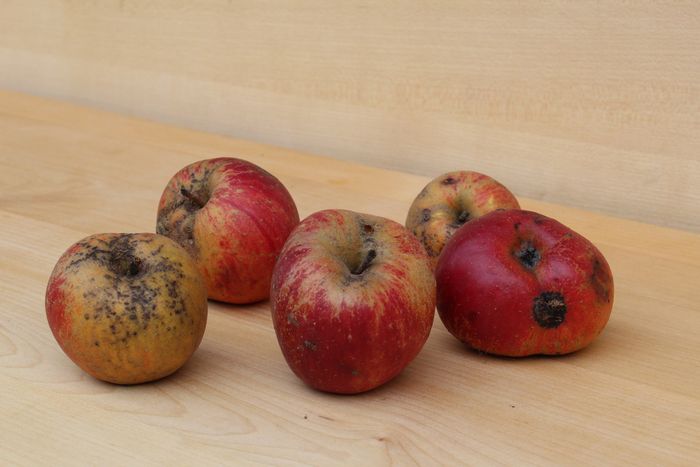
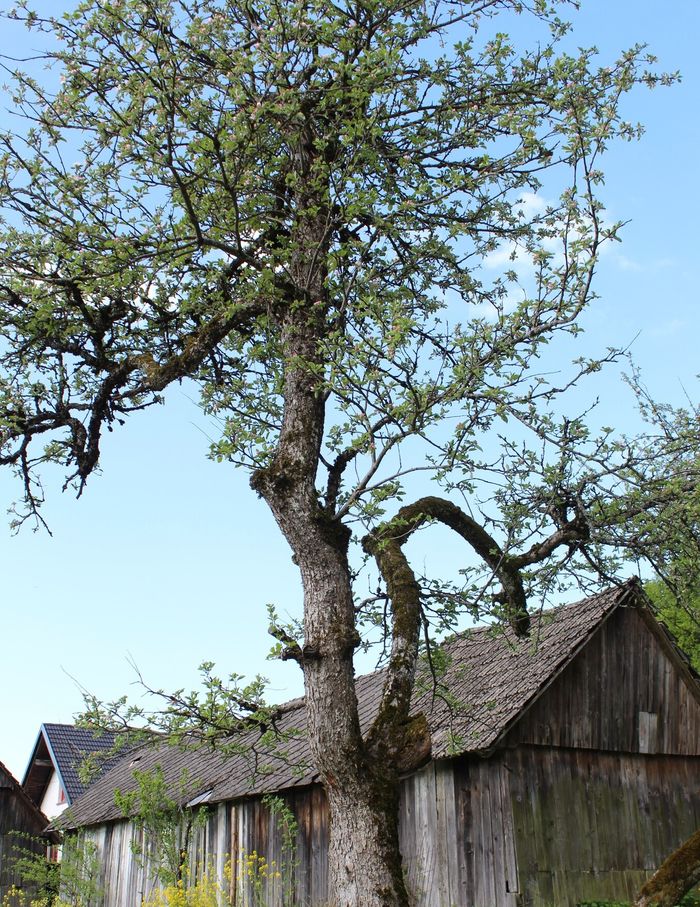
Cox’s Orange Pippin originates from England, where it was first grown by Richard Cox in Buckinghamshire around 1825. It is one of the most renowned English dessert apples. The fruits are medium-sized and round, often slightly flattened. The base color is yellow or greenish-yellow, overlaid with orange-red and crimson striping, giving the apple a characteristic warm hue. It ripens from late September to early October. The flesh is fine-textured, creamy-yellow, crisp, and very juicy. The flavor is rich, aromatic, and complex — balancing sweetness and acidity with notes of pear, melon, and spice. It is best enjoyed fresh, though it can also be used for juice and desserts. It typically keeps until December under proper conditions, but does not store well for longer periods.
Rheinischer Krummstiel (Krivopecelj)
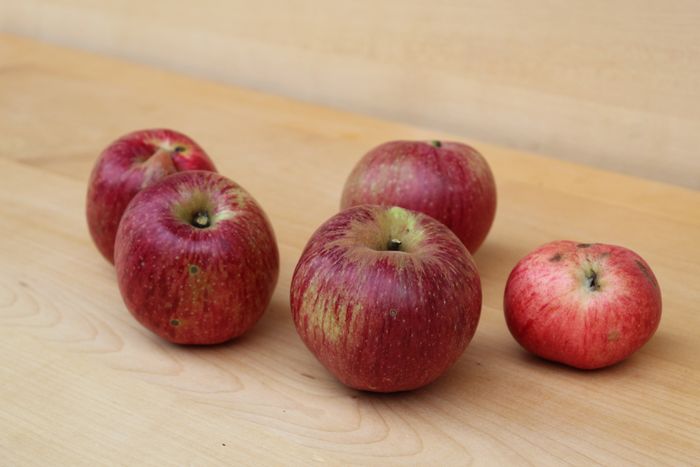
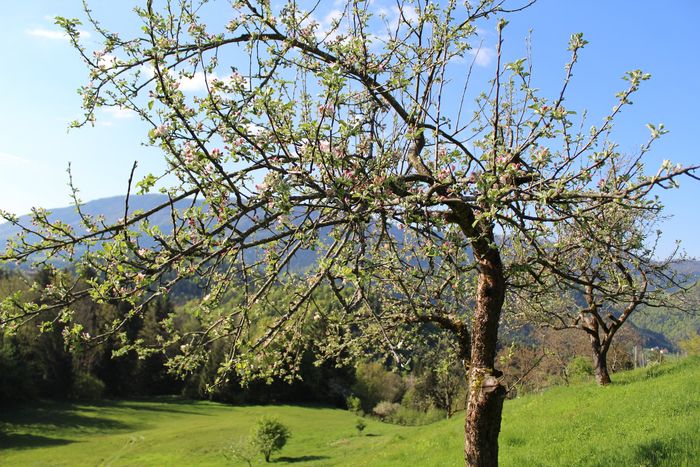
Krivopecelj ("twisted stem" in Slovene, or Rheinischer Krummstiel in German) originates from the Rhineland in Germany, where it was described as early as 1821. The fruits are large and medium to thick in size, with a somewhat cylindrical shape and irregularities in size. Most of the fruits have the stem positioned sideways, which is where the name comes from. It ripens in October. The flesh is white, firm, juicy, and has a refreshing taste. It stores well — until spring. It is excellent both for fresh consumption and for processing.
London Pippin (Londonski peping)
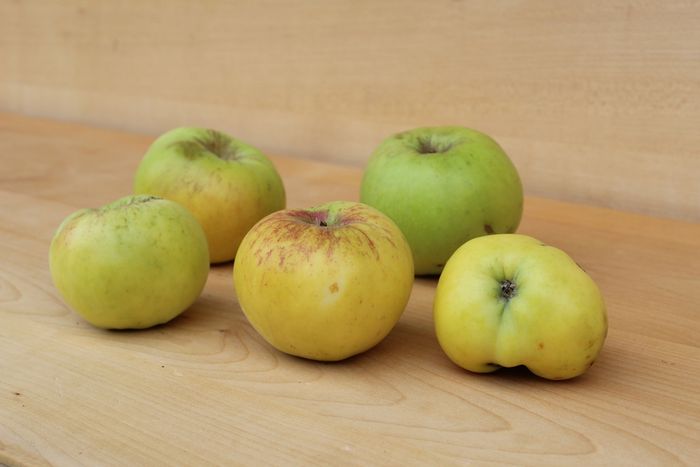
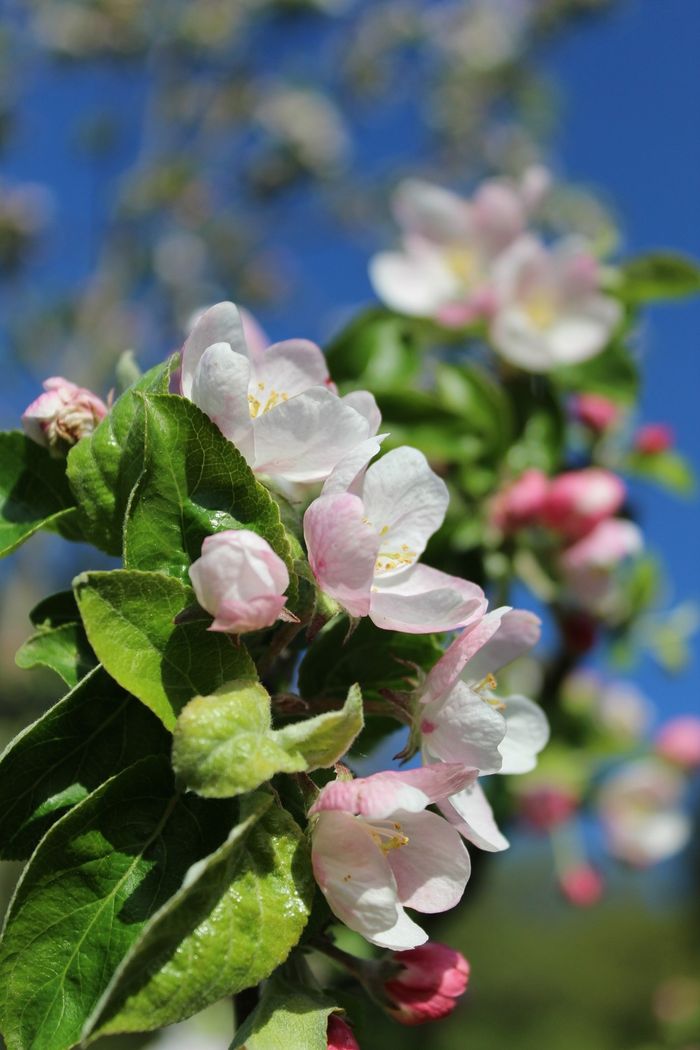
London Pippin (Londonski peping) is an old variety of English origin, first described in 1580. It is a medium to large apple with a yellow color, and part of the fruit often takes on a reddish tone on the side exposed to the sun. It ripens at the beginning of October. The flesh is first firm and greenish, but turns yellow as the apple ripens, becoming soft and flavorful. The fruits are juicy and sweet-tart. It is particularly valued for fresh consumption as a dessert apple, but can last until mid-spring when properly stored.
Štajerski mošancelj
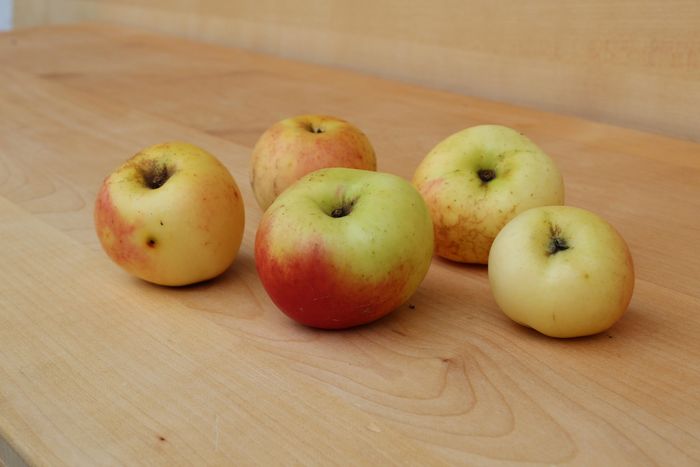
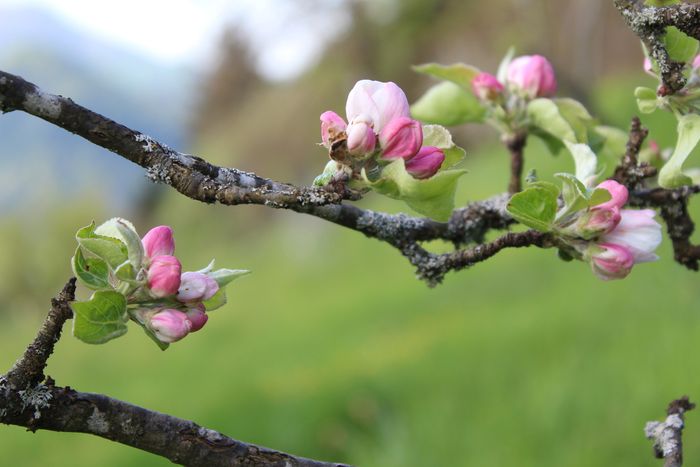
Štajerski mošancelj is an indigenous variety that originates from Styria. It is a small apple, initially greenish-yellow, which turns golden yellow when fully ripe. It ripens in October. The flesh is firm, juicy, aromatic, and has a sweet-tart flavor. Historically, it was highly valued for its firm fruits, which are resistant to bruising and therefore suitable for transport — records show it was exported as far as India. It is used both for fresh consumption and for processing, and Mošancelj’s juice and cider are particularly prized.
Šentjakobka
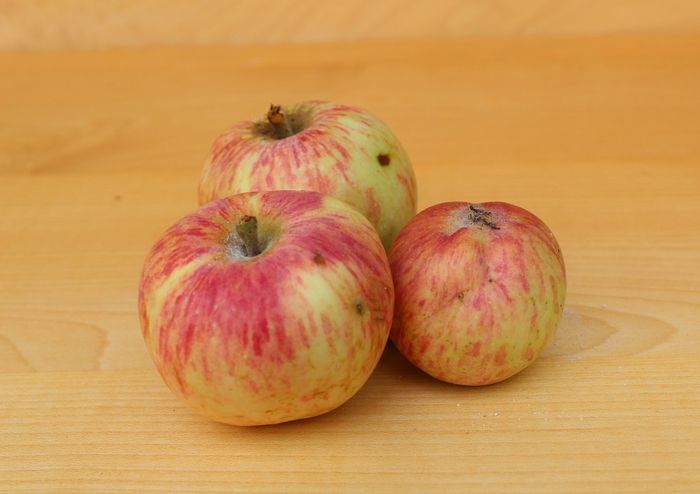
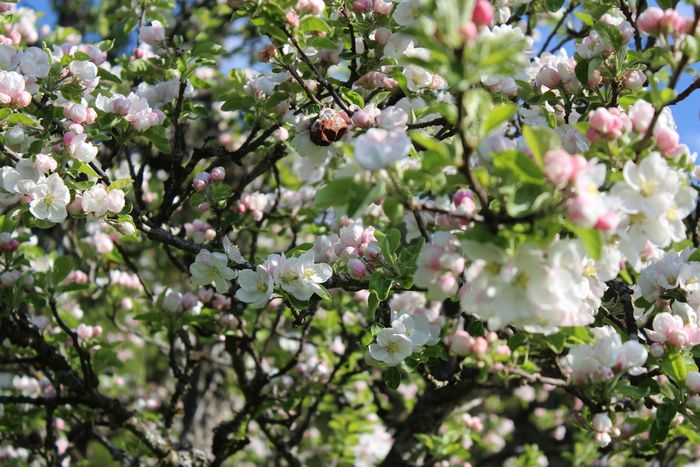
Šentjakobka is (to the best of our knowledge) a regional variety of unknown origin supposedly belonging to the rennet family. It is poorly described — it is familiar to locals in the Mislinja valley but hardly known even in wider Slovenia. It is an early apple with small fruits that ripen in late summer and early fall. The apple's base color is yellow-green, with pinkish-red streaks appearing as the fruit ripens. The skin is smooth and somewhat thick; the flesh is yellowish-white, flavorful, and slightly mealy in texture; the stem is thick, and the skin around the base of stem is often slightly rust-colored. The fresh apple has a pleasant, gentle sweet flavor, and is not particularly acidic when ripe. The apple bruises easily and stores poorly, so is best consumed fresh—it was purportedly a traditional local snack eaten by kids during the first few weeks of school in September.
Golden Pearmain (Zlata parmena)
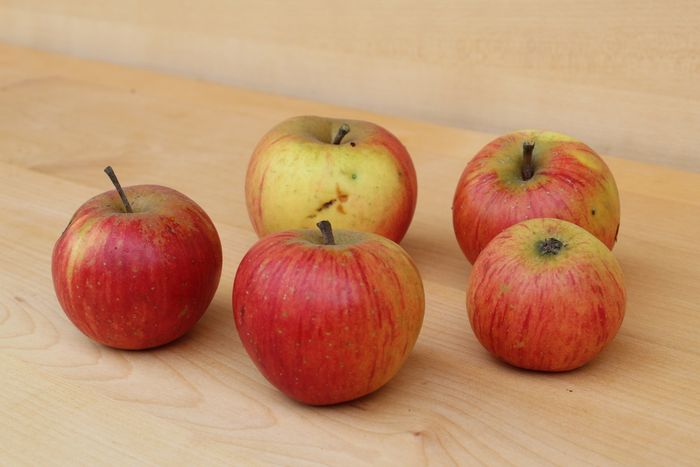
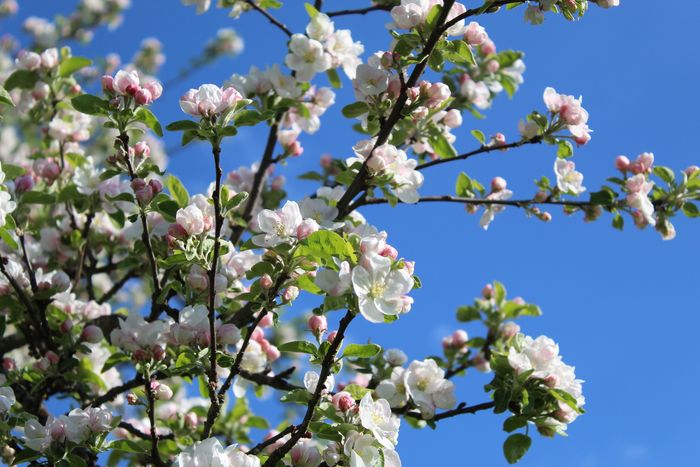
The Golden Pearmain (Zlata parmena) originates from Normandy, France, where it is believed to have been discovered towards the end of the 18th century. It is a medium-sized apple, with fruits that vary in shape. The fruit has a golden yellow base color with red streaks over much of the surface. The flesh is juicy and pleasantly flavored, with an aroma that some say hints of walnuts. It ripens at the end of September. It is valued as a table apple, but is also suitable for processing. It can be enjoyed until January.